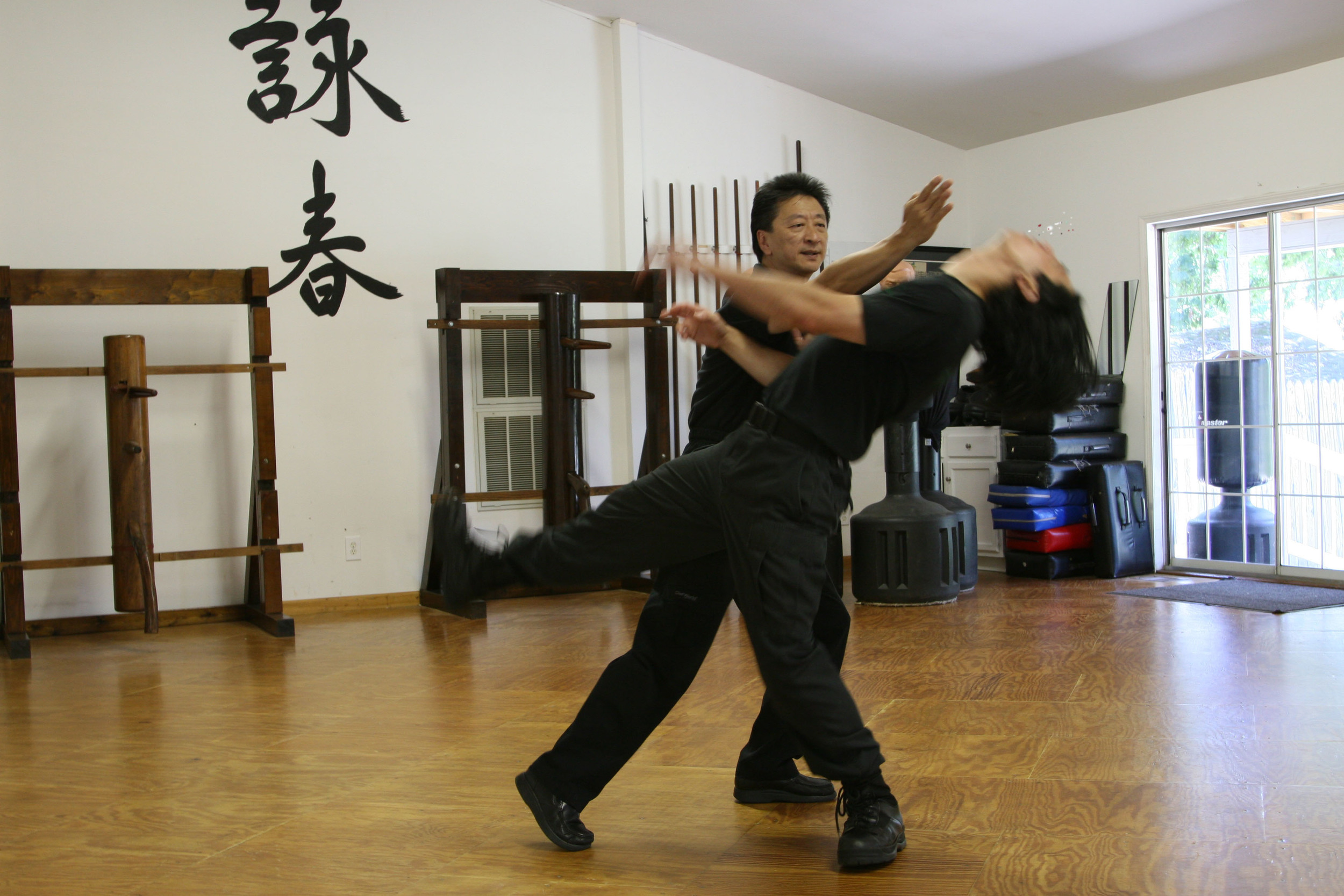What is Wing Chun?
Wing Chun is a very unique and effective martial art. It is the only martial art created and made famous by a woman. Ng Mui, the Shaolin nun who developed the system, realized that most of the techniques in Shaolin kung fu were useless for a small woman to use against a larger, stronger man. She also realized that a woman could not match a man's stamina in a long fight. With this in mind, she developed a system of fighting that enabled a smaller, weaker person such as herself to destroy a bigger, stronger person within a few seconds.
Wing Chun immediately became famous in Southern China, and its name quickly spread throughout Asia. Almost three hundred years later, as Asian martial arts began to spread to the West, Wing Chun became famous in America. Its popularity continues to grow as increasing numbers of students are drawn by its simplicity and effectiveness.
How is Wing Chun Different?
Wing Chun is different from many of today's popular styles, such as karate, tae kwon do, and Shaolin kung fu. While these styles block first and then attack, a Wing Chun student will defend and attack simultaneously. Wing Chun students also do not draw back before striking; instead, they strike from any position. This method both increases the speed and eliminates the telegraphing of the strike. In this way, in the time it takes a karate student to throw one or two punches, a Wing Chun student will throw at least nine.
While most other styles rely on windup to generate striking force, Wing Chun uses the structure of the entire body to create power in a small space. Wing Chun's famous "one-inch punch" is a testament to its striking power. Because proper positioning will overcome sheer strength, much of a Wing Chun student's time is spent training his or her body to move precisely and efficiently. Wing Chun uses chi sao (sticking hands) training to develop this precision and economy of motion.
The History of Wing Chun
Note about history: The history of Wing Chun has been passed down through word of mouth over many generations. Often, this type of storytelling results in many different versions of the story appearing over time. Thus, the story of Wing Chun is not necessarily accurate down to the exact detail. Instead, it is a guideline for what generally happened. Recent history contains more accurate facts, due to the writings and recordings of modern society.
The Story of Wing Chun
Shaolin Temple. Buddhist temple in China, the birthplace of all martial arts styles. Divided into chambers, or rooms, each chamber teaching a certain style, weapon, or skill. The temple was burned down by the Manchu government about 300 years ago, killing many of the monks and nuns. A few escaped, including the Five Elders: five who had mastered every chamber. Only one of the Five Elders was a nun; her name was Ng Mui.
After the temple burned down, Ng Mui traveled the country, hiding from the Manchus. She settled on top of a mountain in southern China, where she began to think about all of her martial arts knowledge. She realized that much of what she had learned was ineffective or impractical for a small, frail woman to use on a larger man. So she began to revise everything she knew, discarding those techniques that relied on strength or size, were inherently slow, were too flowery, or which wasted motion. She was left with a core of fast, effective, economic techniques that relied on things like the body’s structure for power; simultaneous defense and attack for economy; and angle, distance, and redirection of the opponent’s energy instead of strength.
One day Ng Mui made her usual trip to the village at the bottom of the mountain to buy food and supplies. While at a bean curd stand owned by a father and his daughter, Ng Mui noticed that the two seemed troubled. She soon found out that the girl, named Yim Wing Chun, was being pressured into marriage by a local bully who had threatened her father with physical harm if she refused. Sensing their desperation, Ng Mui revealed her identity and offered to train the girl in kung fu. She suggested that Wing Chun challenge the bully to a fight in one year’s time. If the bully won, the girl would marry him; if the girl won, the bully would leave her alone. Wing Chun and her father agreed and the bully, who was the best fighter in the area, laughed at the challenge and gladly accepted.
Ng Mui trained the young Wing Chun in her newly revised system. She trained diligently day and night for one year, learning the basic theories and techniques of the system.
When the year was up, Wing Chun returned to the village and faced her challenger. Each time the bully charged in at her, she would quickly drop him with a simple technique. The bully could not believe he was being defeated—much less by a young girl. He became more frustrated and charged in harder. Each time he was knocked down by Wing Chun until he stayed down.
The system became known as Wing Chun, after the woman who made it famous throughout China.
Lineage
The following illustration shows the lineage of the Wing Chun system, starting with its founder, Ng Mui.





